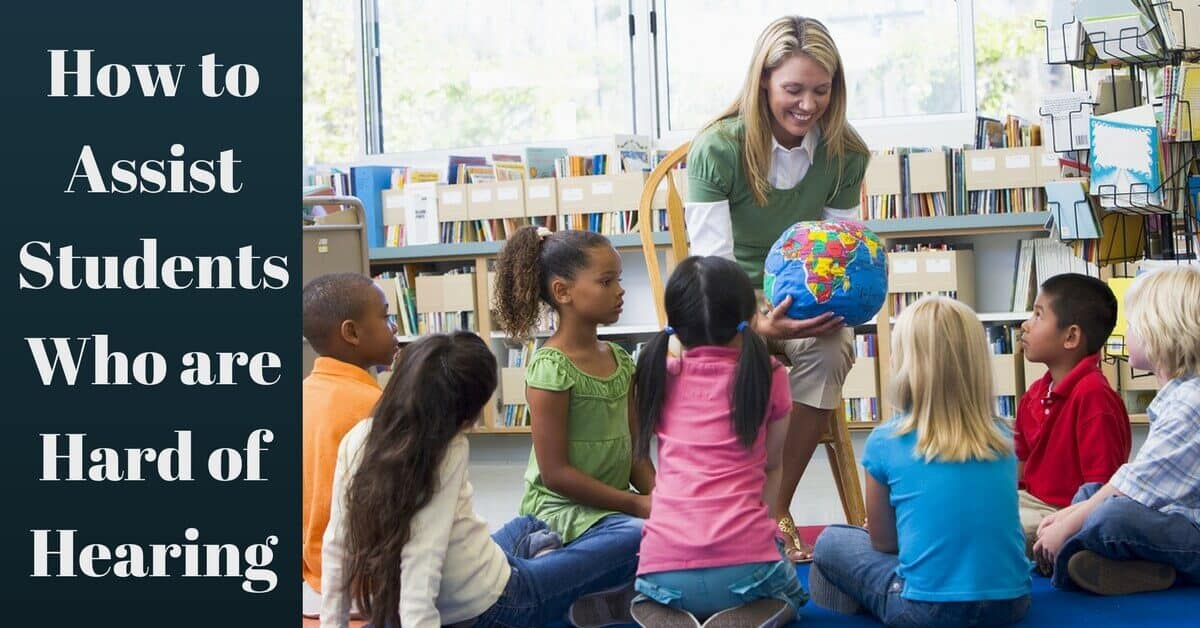Hard of hearing students, whether their hearing impairment ranges from mild to severe, will inevitably come up against additional challenges in the classroom. Whether it is not being able to communicate easily with their peers, hear the teacher’s instructions, or understand the words of a film, a lack of access to information can often negatively impact hard of hearing students’ experiences in school.
The good news is that there are a number of adjustments teachers can make to ease the hardship of students with hearing difficulties. These adjustments range from making use of technology to simply making sure that students with hearing aids are seated in positions that are ideal for listening.
If properly implemented in the classroom, these accommodations and adjustments can help to minimize the social, educational and emotional difficulties that many deaf and hard of hearing students experience.
But what works for one child may not work for another, and knowing which accommodations will most benefit a hard of hearing student requires careful observation and planning on the part of their teacher, as well as meeting with a student’s parents and hearing healthcare specialist.
Here are a few basic guidelines on how teachers can help to ensure the success of hard of hearing students in the classroom. For parents of children with hearing loss, this could be a handy guide to pass on to educators.
1. Be clear in your speech
Always speak clearly and at a reasonable pace. Keeping the rhythm of your speech as natural as possible will help your hard of hearing students to follow you. If you are not sure if your pace is right, don’t hesitate to ask them. If a hard of hearing student asks you to repeat something, don’t be tempted to raise or artificially slow your voice. It is more helpful to paraphrase what you have said, speaking naturally and at a steady volume.
2. Make sure your face is visible
Many students with hearing issues use lip-reading to assist their understanding of speech. To do this, a student needs to be able to fully see your face. Do not cover your mouth with anything while speaking, and in one-on-one communications, ensure that you directly face the person you are speaking to.
Try to avoid nodding your head too much, speaking while writing on the board, or walking around the room as you speak, as this makes lip-reading nearly impossible.
Light should be on your face at all times, and never from behind you as this is make your face a silhouette.
Allow your hard of hearing students to choose the seats that make it easiest to see your face, and hear you. They should be seated near the front of the room.
3. Use your face and gestures to convey meaning
Always make eye contact when talking to a hard of hearing student one to one.
Be expressive with your face as you are speaking, and use gestures. Both of these things will give helpful clues about your speech to hard of hearing students.
4. Be aware of equipment and technology that could benefit hard of hearing students in classroom:
Hard of hearing students in your classroom will likely be making use of hearing aids or cochlear implants. When meeting with the student and their parents at the start of the year, take the opportunity to familiarize yourself with their hearing equipment (especially with younger students), and make sure that you can help them to change their hearing aid batteries if necessary.
If you teach in a classroom or lecture hall equipped with an induction loop system, make sure that your hard of hearing students are aware of how to use it, and remember to speak clearly into the microphone at all times.
A Personal Radio Frequency System (FM system) uses radio waves to send speech and other sound signals directly to a child’s hearing aids. FM systems are becoming more widely available in classrooms due to legislation that mandates equal access to technology, and they are extremely helpful in aiding speech comprehension in large, noisy listening environments. If you have a student who makes use of an FM system, you will need to wear a transmitter or place it somewhere prominent in the classroom.
When showing films, use closed captioning or subtitles whenever possible. If you want to get a sense of what it is like for a hard of hearing student to watch a film without closed captioning, watch a film while wearing earplugs. You will be shocked at how much you miss.
5. Tips on presenting information:
Before presenting a new topic, let any hard of hearing students know about what is going to be discussed. Try to include contextual clues and visual aids as much as possible. Allow a little extra time for hard of hearing students to process information and respond, before going on to the next stage. Write all instructions on the board, and make sure HOH students receive written documentation of any important classroom assignments or changes.
Are you concerned your child may have a hearing loss?
At Desert Valley Audiology, we provide comprehensive hearing tests and hearing aid fittings for people of all ages, and we treat pediatric hearing loss. To schedule a hearing test and consultation, contact our team today.

